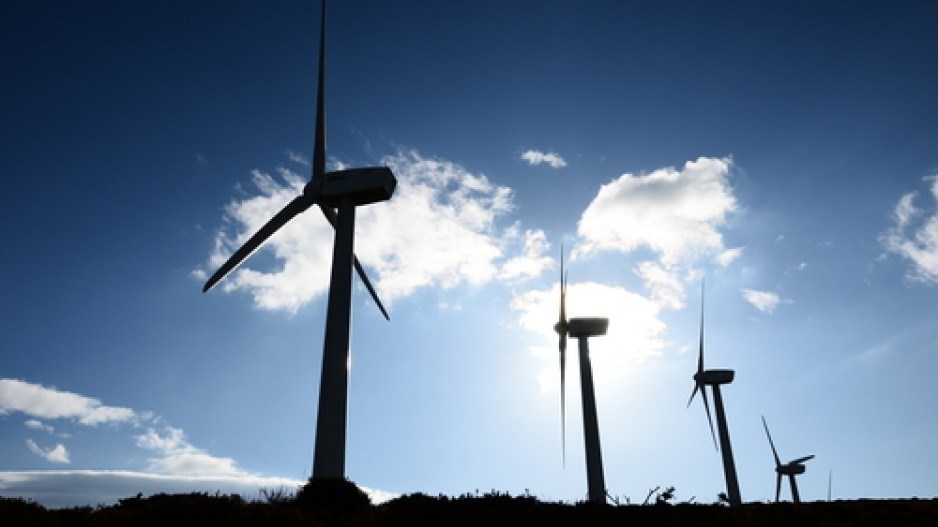If venture capital (VC) investment is any barometer, 2013 was not a good year for the clean technology sector.
VC financing for clean-tech in the U.S. fell from $3.7 billion in 2012 to just $1.4 billion in 2013 – the weakest year for VC investment in clean-tech since 2007 – according to PitchBook's VC Cleantech 2013 Report.
Local analysts and venture capitalists predict that may change in 2014. And even if it doesn't, the drought of VC investment in early stage clean-tech companies is increasingly being offset by corporate investment, says Dallas Kachan, principal of the Vancouver clean-tech research and consulting firm Kachan & Co.
"Inasmuch as venture capital may still be depressed in 2014, venture is playing less of a role than ever in fostering new clean-tech innovation. The largest companies in the world have stepped in to foster clean products and services, and I think that trend will continue because there's undeniable economics now in doing things cleaner and greener."
Kachan also predicts 2014 may be the year when equity crowdfunding starts providing some early stage financing.
"We really think that large pools of capital are just waiting to be unlocked by the right equity-based crowdfunding platforms," Kachan told Business in Vancouver.
Should investment in clean-tech pick up in 2014, Western Canada stands to benefit, according to Wal van Lierop, CEO and founder of Vancouver-based Chrysalix Energy Ventures, one of the world's most active clean-tech focused venture capital investors.
He pointed out that Alberta and B.C. have the right mix of extraction industries (and all the environmental problems that come with them) and West Coast high-tech know-how to become something of a clean-tech powerhouse.
"We have, between Alberta and B.C., a tremendous opportunity to define the energy industry of the future," van Lierop said.
"We can build bridges between the tech community in the Lower Mainland and the major oil and gas companies in northeastern B.C. and in Alberta who have significant pain points and need the tech community to help solve these pain points. Both industries need each other."
A good example of what venture capitalists like van Lierop look for in new clean-tech companies is MineSense Technologies Ltd. In 2013, Chrysalix took a $2.5 million stake in the company, which developed pre-sorting technology that uses sensors to detect ore quality, allowing mines to pre-sort ore and dramatically reduce waste.
"We're looking at opportunities that can simultaneously reduce costs, reduce energy intensity and improve the environmental footprint," van Lierop said. "And we're staying away from subsidies."
Among Chrysalix's early investments was Day4 Energy, the now-defunct Vancouver solar photovoltaics innovator. It was just one of many casualties of a market that became oversaturated, thanks in part to feed-in-tariffs. (Chrysalix made a profit on Day4 because it exited before the photovoltaics market crashed.)
The one upside of all that fierce competition is that solar power has become cost competitive with other power generation sources, and new spinoffs are now being created.
One of the most successful IPOs in the clean energy sector recently was SolarCity Corp. (NYSE:SCTY), chaired by Tesla CEO Elon Musk. It is focused on residential and commercial solar roof installations – a space that Surrey's MSR Innovations is also developing.
Chrysalix also recently invested in GlassPoint, a California solar power company that builds solar-powered steam generation plants for improved oil recovery in the sun-soaked, oil-rich Middle East as an alternative to burning natural gas.
"We are now working on an order portfolio that is close to $1 billion," van Lierop said.
"We think that solar will continue to make a comeback. In the past four years, we have seen a reduction of the cost of solar by 20% year over year, while the efficiency is still going up by about 7.5% every year. No pun intended, but the future of solar looks bright."
Wind picking up energy market power in B.C.
The future for solar may be bright elsewhere in the world, but on a utility scale, it never had a market in overcast B.C.
Wind power, on the other hand, is uniquely suited to B.C., where hydro dams can be used to backstop intermittent wind power, according to the Canadian Wind Energy Association (CANWEA).
According to CANWEA president Robert Hornung, 2013 was a record year for the wind sector in Canada, with 20 projects of new wind energy capacity built. One of those projects was the 99 megawatt Cape Scott wind farm on Vancouver Island.
There are contractual commitments in place that could add another 200 MW of wind power capacity in B.C. between 2014 and 2016. Currently, wind provides just 2% of B.C.'s installed power.
Canadian wind developers and many First Nations groups are hoping a mining and natural gas boom in B.C. will increase opportunities for wind power.
"We believe that wind energy is extremely well positioned to provide this electricity on a cost-effective basis," Hornung said. "Wind turbines can now operate cost-effectively in much lower wind-speed areas, and that has opened up significant opportunities for the industry."
But wind producers need BC Hydro to sign long-term power purchase agreements – something the utility has been backing away from.
There are also concerns the province might scrap its own self-imposed cap that requires 93% of all new energy production to come from clean or renewable sources in order to facilitate the development of liquefied natural gas, much of the electricity for which will likely come from burning gas. If the cap is removed, it would reduce the need for renewable energy.




